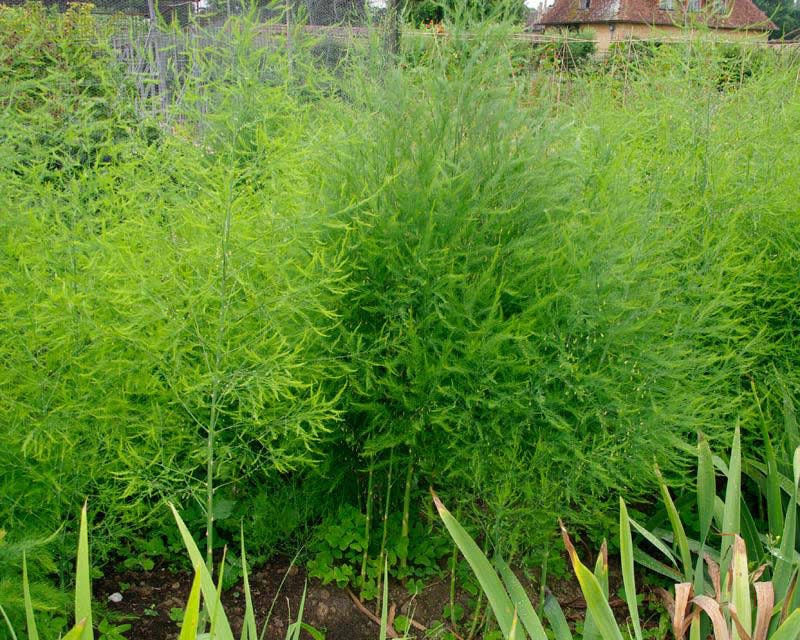Campbell Vaughn: Asparagus is more than good eating. Also a nice addition to the landscape

I really am not much of a vegetable eater. I never have been.
They are good for you and all that, but I just never took a shine to black-eyed peas and collards. But there is one that grew on me and now I love it. Asparagus. Sauté with a little butter and salt and let there be green on the plate.
There is another reason I like asparagus and it stems (like the pun) from it being a perennial with great color and texture to add to your landscape. Asparagus is a hardy perennial that will provide feathery leaves to accent the garden with the bonus of delicious spears every spring once the plants are established.
Choose a site for your asparagus in a bed with good drainage and full sun. Make sure to get all the weeds out of the bed when preparing, especially grassy weeds like bermuda grass and nut sedges.
Asparagus is bought as a “crown” which is like what a daylily may look like without its leaves. Crowns are the 1-year-old roots of asparagus typically sold in nurseries and garden centers. Although asparagus can be grown from seed, it is difficult, time-consuming and will cost an extra year of growth before harvest is possible. Planting the asparagus as crowns will allow you to collect an abbreviated harvest in the spring of the second year of growth.

This vegetable will grow 4- to 5-feet tall ferns so it may shade other plants. Install the new plants on the northern side of the bed. Prepare the bed as early as possible, and enrich it with additions of manure, compost, bone or blood meal, leaf mold, or a combination of several of these. Make sure the pH is between 5.8 and 6.5 to ensure the plants can properly intake nutrients.
Planting crowns can be done from November to March. Although asparagus takes two to three years to begin production, it will be highly productive for seven to eight years before gradually declining.
Recommended cultivars include the Yankee themed Jersey Giant, Jersey Knight, Jersey Gem as well as Purple Passion and Mary Washington.
Weed the bed each spring before the first shoots come up to avoid accidentally breaking off spears. During the production period, it is best to pull rather than hoe weeds. Maintain a 2- to 3-inch layer of mulch throughout the year.
Campbell Vaughn: Recent death of a childhood friend brings back memories of playing in creeks
Water deep less often to moisten the soil to a depth of at least 6 inches, but don’t drown the plants. Light watering will encourage shallow rooting. Nitrogen, phosphorus, and potassium are all important at planting and throughout the entire lifespan of asparagus, so use a complete fertilizer yearly. Apply one-quarter cup of fertilizer (10-10-10) to each plant in late winter or early spring before the spears emerge and again after harvest.
Harvest lightly in the third year for three to four weeks if the ferns the year before were very vigorous, bushy and shoulder high. It is possible to harvest very lightly in the second year just for a taste if the fern in the previous year was very vigorous, bushy and waist high. If the fern was weak, postpone harvest until the third year.
Harvest spears daily during the harvest period. Six- to 8-inch spears are best and should be cut or snapped off at the soil surface before the tips begin to separate. Cutting too deeply can injure the crown buds that produce the next spears. If the asparagus is allowed to get much taller, the base of the spear may be tough and will have to be cut. The ferny foliage will get killed by a heavy frost so clip the leaves to the ground in winter.
Asparagus is a terrific addition to any vegetable garden or accent plant in a flower bed with the benefits of deliciousness. If you don’t like to eat them, bring them to the Extension office and we will make sure they are put to beneficial use.
This article originally appeared on Augusta Chronicle: Campbell Vaughn: Asparagus looks good, tastes good and is good for you

